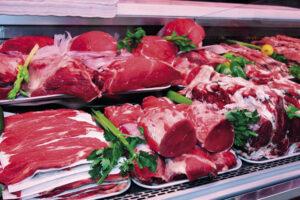Challenges and performance of the Hungarian meat industry in 2023
The year 2023 was full of significant challenges for the Hungarian food industry, but at the same time the industry also achieved growth, especially in export revenue. According to data from the National Tax and Customs Administration (NAV), the number of food industry enterprises decreased to 3,892 in 2023, which represents a 5.1% decrease compared to 2020 data. The number of employees in the industry also decreased by nearly 2%, but at the same time, the sales revenue of the food industry increased by 56.1%, while the export sales revenue increased even more, by 57.1% – Agrárszektor points out.
The position and role of the meat industry in the food industry
 The meat industry is one of the most significant segments of the food industry, accounting for 10% of the industry’s enterprises in 2023 and playing a prominent role in sales and employment. The meat industry companies recorded sales revenue of HUF 1,505 billion and employed approximately 19,800 people, which represented 23.7% of the employees in the food industry. At the same time, production and capacity utilization became more and more restrained, partly due to economic considerations and the decreasing production volume.
The meat industry is one of the most significant segments of the food industry, accounting for 10% of the industry’s enterprises in 2023 and playing a prominent role in sales and employment. The meat industry companies recorded sales revenue of HUF 1,505 billion and employed approximately 19,800 people, which represented 23.7% of the employees in the food industry. At the same time, production and capacity utilization became more and more restrained, partly due to economic considerations and the decreasing production volume.
The structure of the food industry and the proportion of foreign ownership
The majority of food industry enterprises were small and micro-enterprises, their proportion reached 91.4%, while large and medium-sized enterprises accounted for 8.6% of the companies. However, these larger companies accounted for 90.7% of sales revenue and 96.2% of export earnings, and provided 76.3% of the sector’s workforce. The proportion of foreign ownership in the industry was significant: 46.3% of the registered capital was owned by foreign investors, while the remaining 53.7% was shared by domestic corporate, private, state and non-profit owners.
The effect of cost increases on production and consumption
In 2023, rising inflation, raw material prices, energy prices and labor costs put serious pressure on the food industry. Some sectors also struggle with labor shortages, which further complicates efficient production and competitiveness. These rising costs also have a direct impact on consumers, as the consumer prices of food products continue to rise, and in the case of some products, consumption has fallen due to rising prices.
Related news
2025 was a black year for the Hungarian food industry: product lines under pressure on multiple fronts
🎧 Hallgasd a cikket: Lejátszás Szünet Folytatás Leállítás Nyelv: Auto…
Read more >Belgian startup uses AI to reduce food waste
🎧 Hallgasd a cikket: Lejátszás Szünet Folytatás Leállítás Nyelv: Auto…
Read more >Hungarian sausages on the New Year’s Eve table!
🎧 Hallgasd a cikket: Lejátszás Szünet Folytatás Leállítás Nyelv: Auto…
Read more >Related news
Akcenta: The Hungarian economy returned to growth in 2025, risk management will come to the fore in 2026
🎧 Hallgasd a cikket: Lejátszás Szünet Folytatás Leállítás Nyelv: Auto…
Read more >At profit temperature – 3 climate trends reshaping the economy
🎧 Hallgasd a cikket: Lejátszás Szünet Folytatás Leállítás Nyelv: Auto…
Read more >BMI: The manufacturing industry ended the year with sustained expansion
🎧 Hallgasd a cikket: Lejátszás Szünet Folytatás Leállítás Nyelv: Auto…
Read more >







